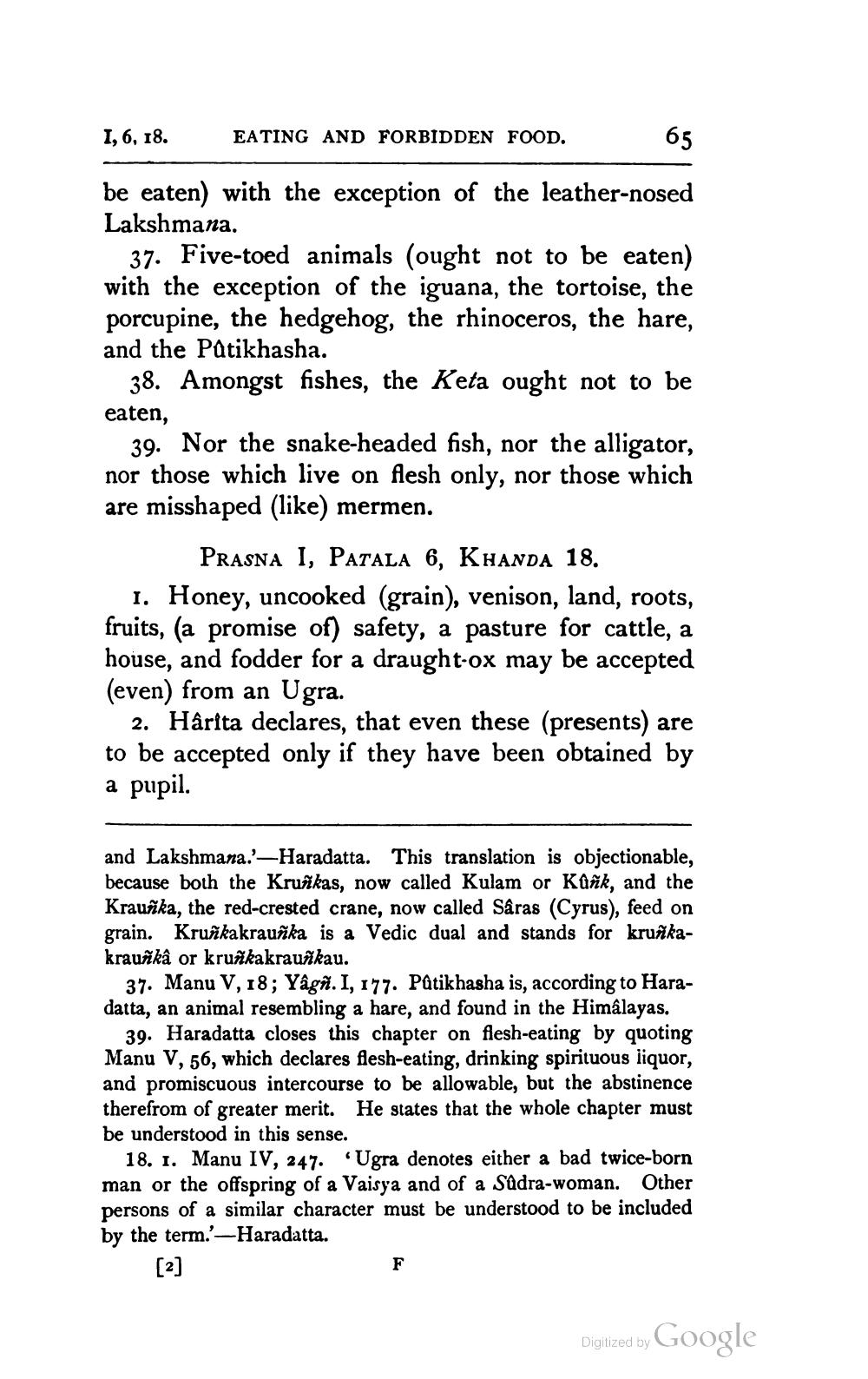________________
1,6, 18.
EATING AND FORBIDDEN FOOD.
1
65
be eaten) with the exception of the leather-nosed Lakshmana.
37. Five-toed animals (ought not to be eaten) with the exception of the iguana, the tortoise, the porcupine, the hedgehog, the rhinoceros, the hare, and the Patikhasha.
38. Amongst fishes, the Keta ought not to be eaten,
39. Nor the snake-headed fish, nor the alligator, nor those which live on flesh only, nor those which are misshaped (like) mermen.
PRASNA I, PATALA 6, Khanda 18. 1. Honey, uncooked (grain), venison, land, roots, fruits, (a promise of) safety, a pasture for cattle, a house, and fodder for a draught.ox may be accepted (even) from an Ugra.
2. Hârita declares, that even these (presents) are to be accepted only if they have been obtained by a pupil.
and Lakshmana.'-Haradatta. This translation is objectionable, because both the Kruñkas, now called Kulam or Kank, and the Krauñka, the red-crested crane, now called Saras (Cyrus), feed on grain. Kruñkakrauñka is a Vedic dual and stands for krunkakraunkâ or kruñkakraunkau.
37. Manu V, 18; Yâgñ. I, 177. Patikhasha is, according to Haradatta, an animal resembling a hare, and found in the Himalayas.
39. Haradatta closes this chapter on flesh-eating by quoting Manu V, 56, which declares flesh-eating, drinking spirituous liquor, and promiscuous intercourse to be allowable, but the abstinence therefrom of greater merit. He states that the whole chapter must be understood in this sense.
18. 1. Manu IV, 247. Ugra denotes either a bad twice-born man or the offspring of a Vaisya and of a Sudra-woman. Other persons of a similar character must be understood to be included by the term.'-Haradatta.
Digjized by Google




